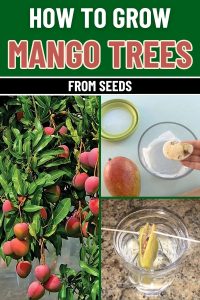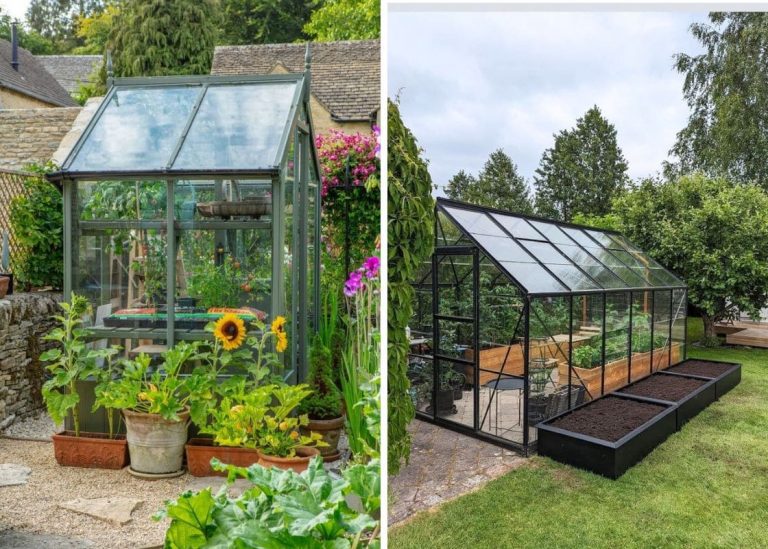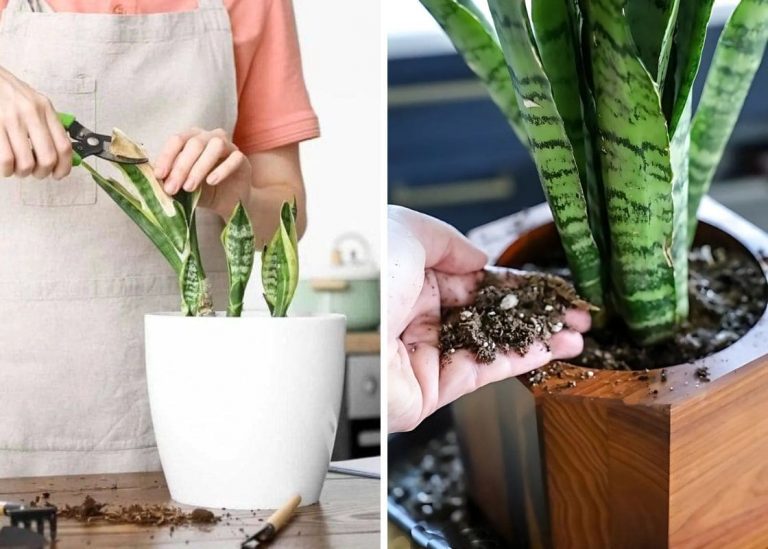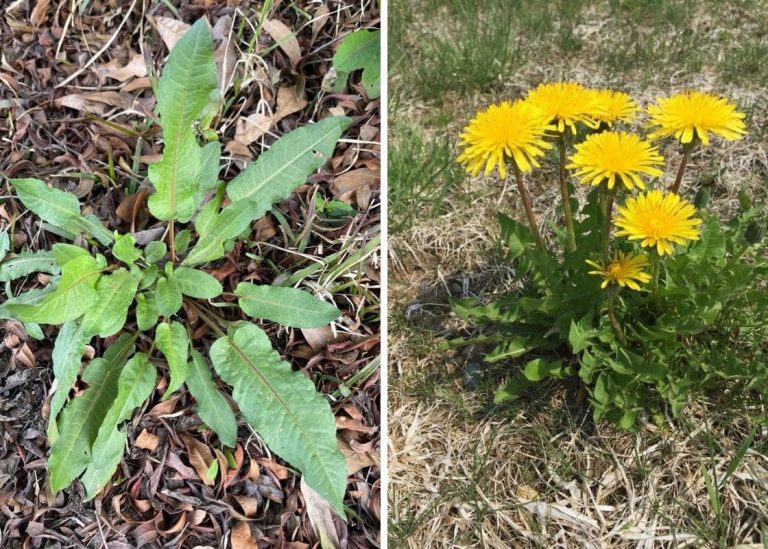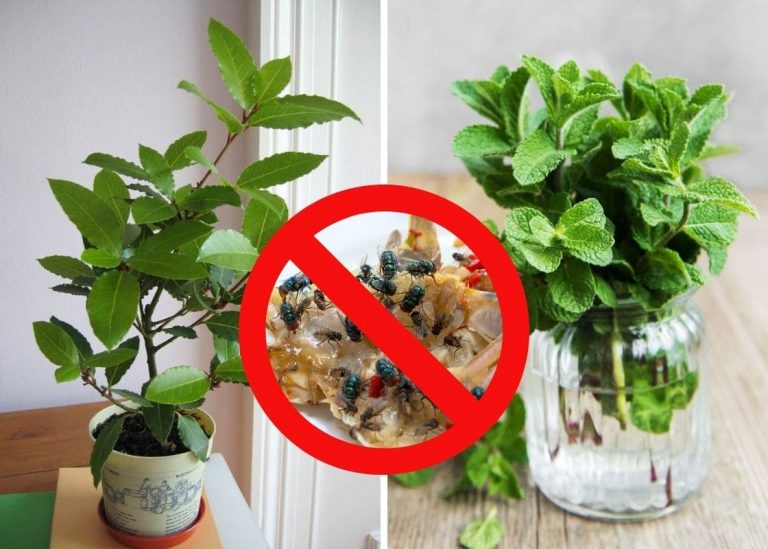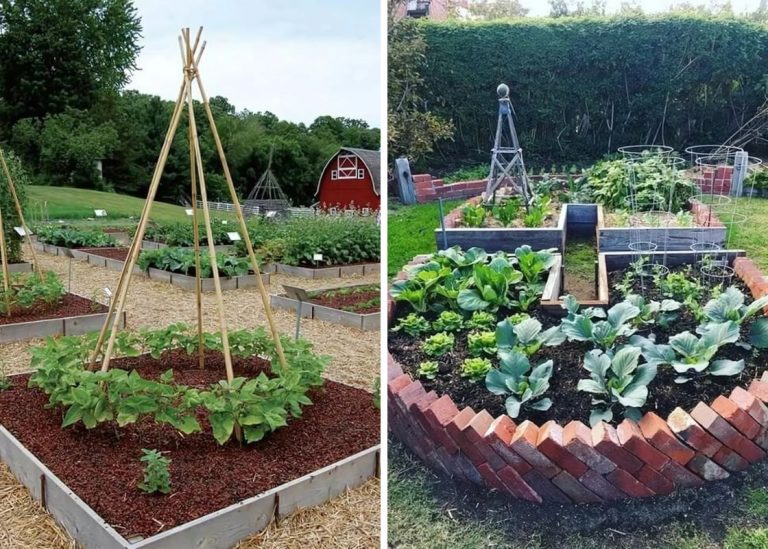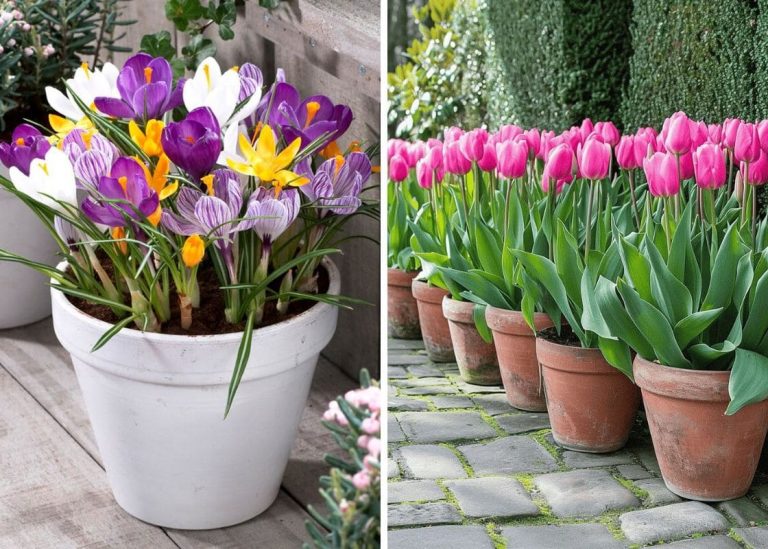Step-by-Step Guide to Growing a Mango Seed in Water For Begginers
A ripe mango sat on my kitchen counter, its scent filling the room with a sweetness that felt too generous to waste. After savoring every golden slice, I stared at the hefty seed left behind, wondering what kind of life might still be tucked inside.
With nothing more than curiosity and a glass of water, I slipped the seed into its new home and set it by the windowsill. Days passed. Morning coffee turned into afternoon watering checks, and somewhere in between, the magic happened—a tiny green shoot, stubborn and full of hope, curled into the light.
That small ritual, that slow unfolding, felt like growing a little piece of the tropics right in the middle of everyday life. Watching that seed transform taught me more about patience, wonder, and the quiet determination of plants than any gardening book ever could.
Today, I’ll walk you through how to start your own mango seed journey—one small act of hope that just might grow into something beautiful.
Step 1: Choosing the Right Mango Seed
Not every mango will give you a seed ready to grow, so it’s worth picking your fruit with care. Look for one that feels heavy in your hand, its skin slightly soft and its aroma rich and inviting. Inside that lush fruit lies a seed packed with quiet potential.
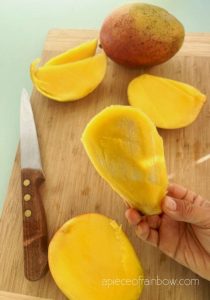
After enjoying the juicy flesh, rinse the husk clean under running water and let it dry slightly. Once it’s easier to handle, gently open the husk along one side using a knife or scissors. Inside, you’ll find the real prize: a smooth, pale seed, often with a soft velvety feel.
Choose a seed that looks firm, creamy in color, and full of life. Avoid any that are dark, shriveled, or smell unpleasant—those are signs the seed may not sprout. Occasionally, you’ll find a seed already showing a tiny root or green tip, like nature giving you a little wink of encouragement.
Step 2: Preparing the Mango Seed for Water Propagation
Once the seed is freed from its husk, it almost feels like holding a smooth little promise in your hands. Before you set it in water, take a quiet moment to inspect it closely. A healthy seed should feel firm and look pale ivory or light tan.
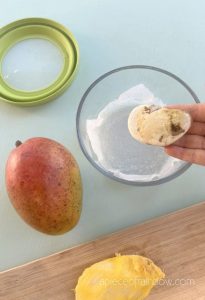
If the seed looks darkened, soft, or carries a strange odor, it likely won’t sprout well. Gently brush off any lingering fibers or moisture. Sometimes, the seed will surprise you with a tiny bump—either a root nub or the first hint of a shoot. It’s always a good sign, a quiet nudge forward from the plant itself.
Step 3: Placing the Seed in Water
Find a clear glass or jar where your seed can sit comfortably, half-submerged like a boat waiting to set sail. Fill the container with room-temperature water, making sure the rounded end dips into the water while the pointier end stays above the surface.

If the seed floats awkwardly, a few toothpicks gently tucked into the sides can help suspend it perfectly in place. Set the jar in a warm, sunlit corner—somewhere it can soak in the day’s light without getting scorched. Change the water every two or three days, keeping it fresh and clear so the tiny life inside can breathe and grow.
Step 4: Watching for Germination
This is where the quiet magic happens. At first, it may seem like nothing is changing, but beneath the water’s surface, the seed is gathering strength.
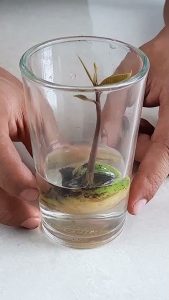
Within one to three weeks, a slim root often curls downward like a white ribbon, while a bold little shoot pushes upward, stretching toward the sun. The first baby leaves may blush red or purple before settling into soft, vibrant green—a gentle reminder that growth doesn’t always look the way you expect. Keep the seed warm, the water fresh, and your patience steady. Every morning brings a little more life to the story.
Step 5: Transplanting the Mango Seed to Soil
When the roots twined thick and white like little underwater vines, and the sprout had stretched taller than my hand, I knew it was time for a bigger home. Moving a growing mango from water into soil feels a bit like helping a child take their first step—delicate, exciting, and just a little nerve-wracking.
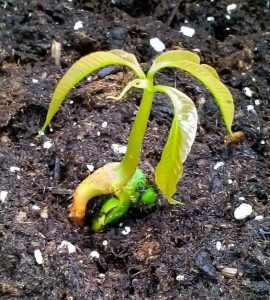
Choose a deep pot with sturdy drainage holes, because mango trees despise soggy roots. I like using a tropical potting mix blended with a bit of coarse sand for extra drainage. Nestle the seed into a small hole, leaving the green shoot proudly above the surface while gently tucking the roots into the soil’s warmth. Water it thoroughly but softly, letting the soil settle around the roots like a comforting blanket.
Quick Tip: If the young roots seem especially fragile, I cup my hands around them like cradling something precious, supporting them from underneath during transplanting. It helps prevent breakage and gives the seedling a stronger, happier start.
Step 6: Caring for Your Young Mango Plant
Watching a tiny sprout unfurl into a sturdy little tree still feels like witnessing a small miracle. Mango plants adore sunlight—at least six to eight hours a day if you can offer it. I keep mine near the sunniest window during winter and shift it outdoors once the temperatures stay warm and kind.
Water deeply when the top inch of soil feels dry, but always resist the temptation to overwater. Once, I let enthusiasm get the better of me, and the leaves drooped sadly overnight—my gentle reminder that mango roots like to breathe, not bathe. Now, I touch the soil every few days to stay connected to what the plant truly needs, not what my excitement tells me.
When my mango sapling reached about a foot tall, I pinched off the very tip of its main stem one sunny morning. It felt slightly cruel at the moment, but within weeks, fresh side branches appeared, making the tree fuller, stronger, and far more beautiful. Pruning encourages heartier growth—think of it as helping your mango find its best shape, not just grow taller.
How Long Until It Bears Fruit?
The question blooms sooner or later: When will I taste my own mangoes? Every friend who visits and spots the mango tree asks it, smiling hopefully. I used to wonder the same thing, watching the tiny tree inch taller by the month.
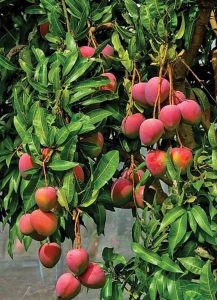
Truthfully, patience is part of the gift. Growing a mango from seed can take five to eight years before the tree matures enough to bear fruit—and even then, there’s no guarantee the mangoes will match the parent fruit exactly. It’s a slow unfolding, much like planting hope itself.
But here’s what I’ve found: even without fruit, the journey offers its own rewards. The glossy leaves stretch toward the light with a joy that fills a room. The trunk strengthens quietly, season after season. A mango tree, even when small, carries a bit of tropical wonder wherever it grows—and often, that beauty turns out to be exactly the harvest you didn’t realize you were planting.
Final Thoughts
Growing a mango tree from a seed is a little act of everyday magic, stitched together with patience, wonder, and a handful of hope. Watching a slick, forgotten seed sprout roots, leaves, and ambition never stops feeling extraordinary.
Some days the growth will be barely visible. Other days, new leaves will unfurl overnight, as if the plant is whispering back: I’m still here. I’m still growing. Trust in that quiet conversation. With gentle hands and a little faith, you’re not just growing a tree—you’re growing a new chapter, one soft green leaf at a time.
